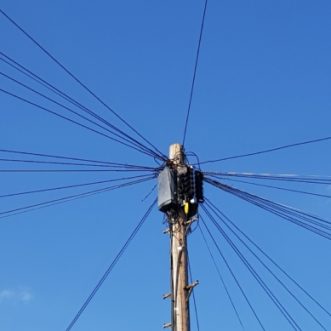
Trivial Pursuits
When we learn effectively we learn in stages. First we learn the rules. Then we interrogate and question ‘the rules’ to arrive at an interpretation that is meaningful for us. Finally we apply our interpretation of the rules to performance, at which point we find out if whether we have been able to communicate that meaning to our audience.
In the olden days these three stages were called Grammar, Dialectic and Rhetoric, collectively known as the Trivium, ‘the three’.
‘Trivial’ originally meant simply belonging to these three. It took on the meaning of ‘lesser’, ‘not serious’, ‘unimportant’ in contrast to its big brothers, the Quadrivium – the four other liberal arts of Astronomy Mathematics, Geometry and Music – the arts that could be said to provide ‘the facts’ behind ‘the rules’.
Of course these pursuits are not at all trivial. They are essential for effective performance. They all have to happen. Blindly accepting rules stifles creativity and progress. Questioning needs to lead to action, otherwise what’s the point? Action needs to be meaningful, not just for the individual but also for the audience, the community.
They also have to happen in the right order. It makes no sense to dive into performance without knowing what you are trying to communicate through that performance. It makes no sense to question before you know what the rules are supposed to be – you end up questioning everything, which makes any kind of performance almost impossible.
We know this, even though we no longer formally learn it. We see the trivial arts in operation all around us, whenever people undertake a creative endeavour, especially a collaborative one, such as putting on a play or concert, making a film, staging a ballet, creating a video game or putting up a building.
A business is another collaborative creative endeavour, that seeks to create profitable, repeat performances that delight and expand its audience. The problem for us business owners is that we have no tradition of looking at them in this way, which leads to some common problems:
- In big businesses, ‘the rules’ get written down alright, but they are focused internally, not on the audience. In the worst cases, those rules become fossilised, unquestionable. Performers are given no real opportunity to use their skill and experience to interpret, to deliver outstanding performances and learn from them. The result is a classic bureaucracy: “We ignore it when we can, circumvent it when we must, destroy it if we are able.” Dee Hock.
- In micro businesses, that ‘more or less abstract representation of proposed reality’ stays firmly inside the originator’s head, and never gets written down into a script, or score, or blueprint. That makes it very difficult to grow beyond a one-man-band or a small, tightly-knit group of friends, especially if the only alternative we’ve experienced is the bureaucracy we escaped from.
It seems to me that one solution is to learn something from the other creative endeavours we know, where the ancient trivial pursuits of Grammar, Dialectic and Rhetoric are alive and well, even if we call them something different.
So, if you had to imagine your business was some other kind of creative, collaborative production, what would it be?








